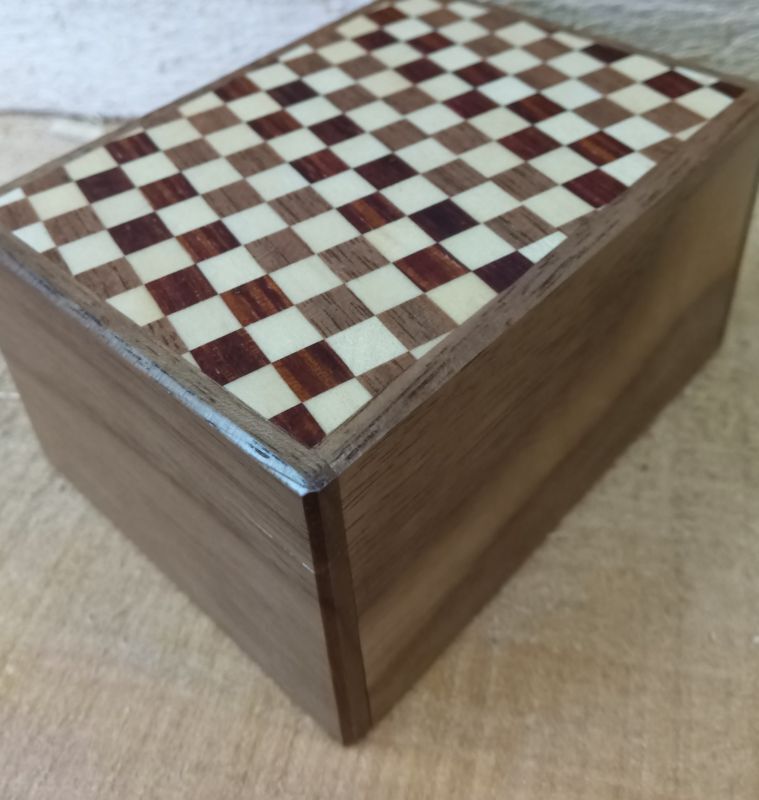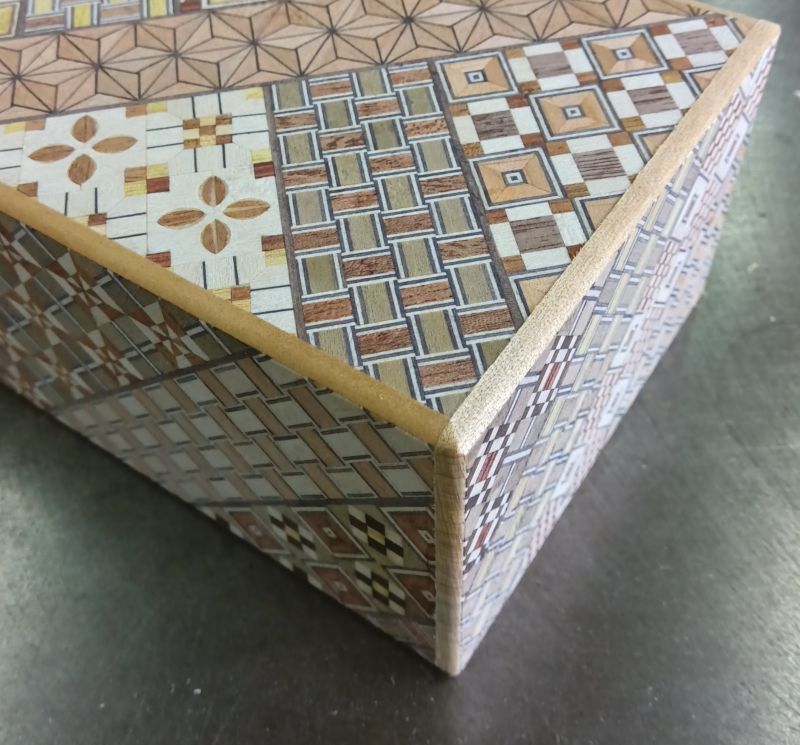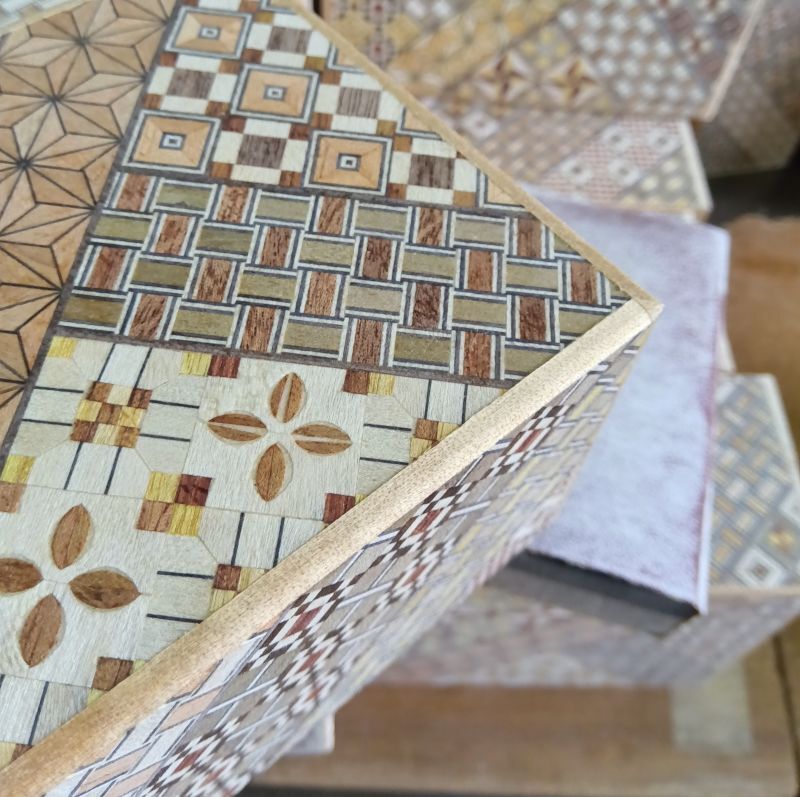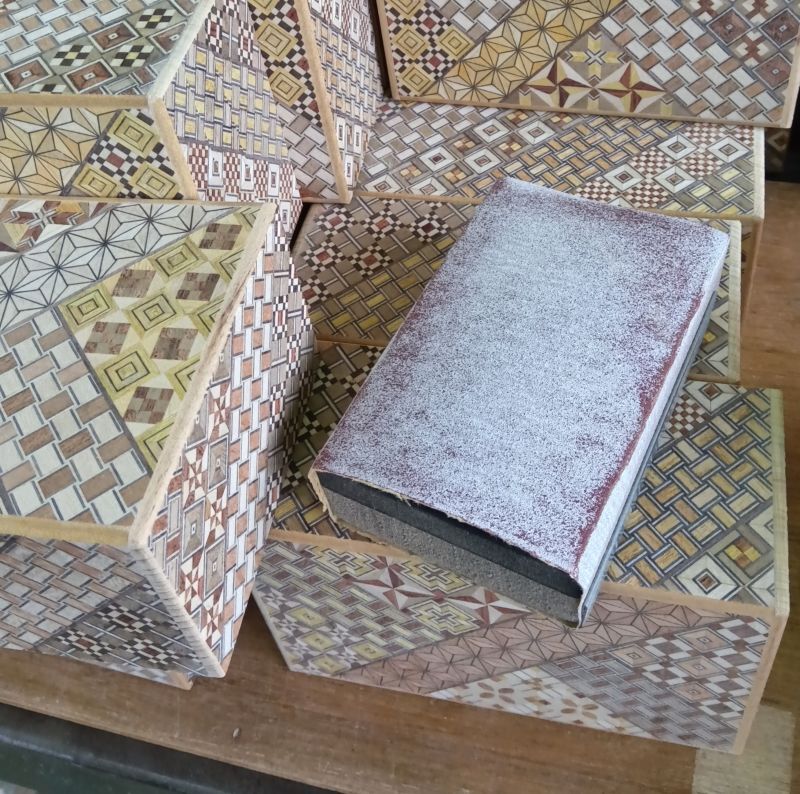Rounded edge
Soon, the 12 steps 3 sun boxes will be completed. Before finish coating, the corners (edges) of the box are smoothed and a finishing process is carried out. Traditional Japanese puzzle boxes usually have rounded edges. For solid wood boxes (in this case, the box with walnut wood side panels), I give them "diagonal" edges (photo). In the past, I used to make rounded edges on solid wood boxes as well, but this caused many problems, so I now do it this way. The difficult thing about this work is that the wood can chip during processing. This is because the side panels of the box are made from thin wood that becomes even more delicate when planed. Not only walnut wood, but most solid woods used for side panels are hard, so sometimes the blade used to round them can chip the wood.
It's a minor difference, but it's for this reason that for the past few years I've been machining the edges of solid wood boxes at an angle rather than rounding them. By the way, the wood used for traditional boxes is agathis or katsura wood, which are soft and elastic. and In many cases, yosegi sheets are applied, which helps prevent the wood from chipping.
For traditional boxes, after the edges have been "roughly" rounded (by a woodworking machine), the excess is removed by hand, one by one, using sandpaper. When rounding by machine, the edges are not completely removed, but rather left slightly protruding (photo). Because the condition of each box is "subtly" different, it is impossible to process them exactly the same way by machine. Sometimes, craftsmen who think this work is "too much work" do it all by woodworking machine. As a result, they scrape off some of the patterns on the surface of the yosegi panel. Therefore, this is a very important step in making the box look beautiful. Even with this diagonal cutting process for solid wood boxes, the edges of the box may occasionally chip, but this can be prevented by using a sharp blade.
It's a minor difference, but it's for this reason that for the past few years I've been machining the edges of solid wood boxes at an angle rather than rounding them. By the way, the wood used for traditional boxes is agathis or katsura wood, which are soft and elastic. and In many cases, yosegi sheets are applied, which helps prevent the wood from chipping.
For traditional boxes, after the edges have been "roughly" rounded (by a woodworking machine), the excess is removed by hand, one by one, using sandpaper. When rounding by machine, the edges are not completely removed, but rather left slightly protruding (photo). Because the condition of each box is "subtly" different, it is impossible to process them exactly the same way by machine. Sometimes, craftsmen who think this work is "too much work" do it all by woodworking machine. As a result, they scrape off some of the patterns on the surface of the yosegi panel. Therefore, this is a very important step in making the box look beautiful. Even with this diagonal cutting process for solid wood boxes, the edges of the box may occasionally chip, but this can be prevented by using a sharp blade.



